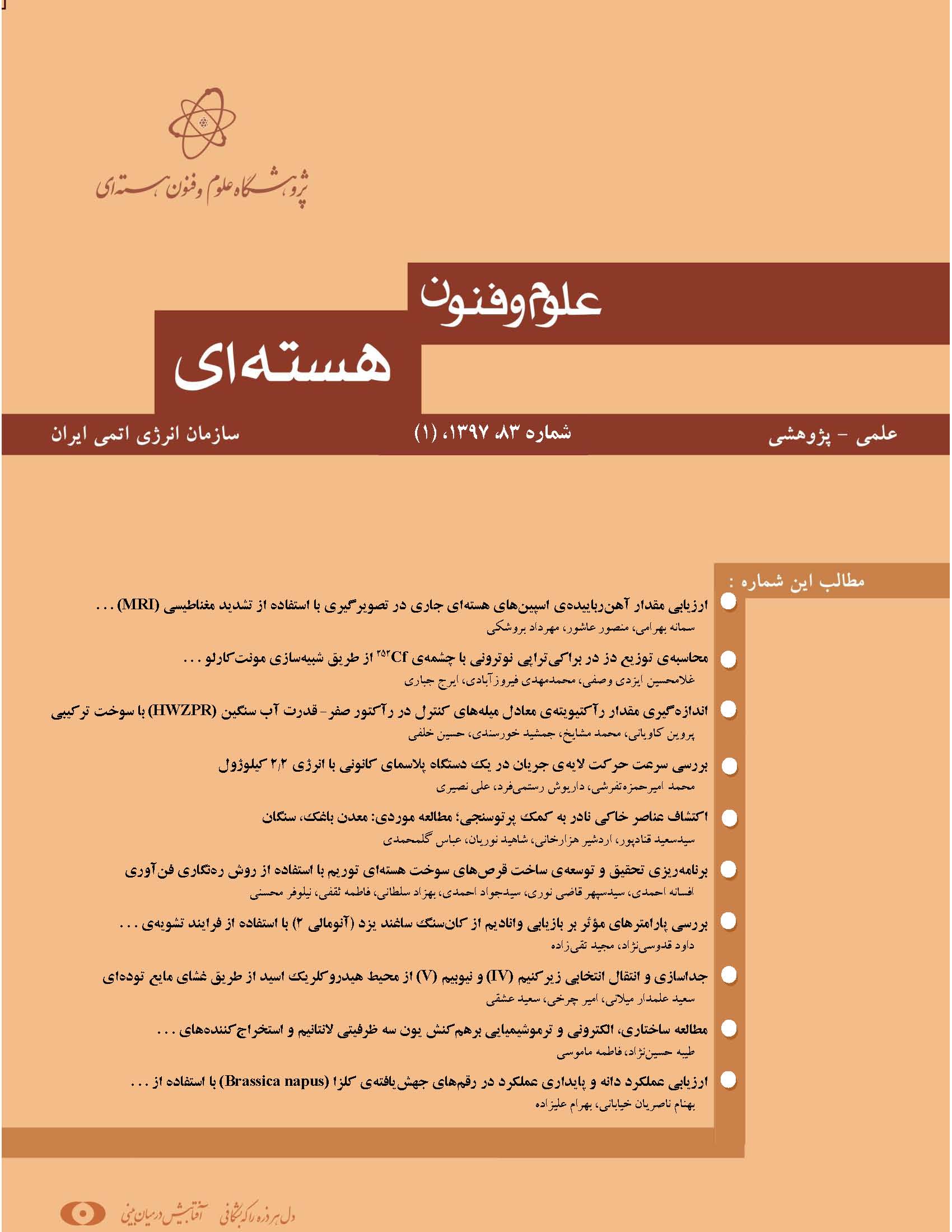نوع مقاله : مقاله پژوهشی
نویسندگان
1 پژوهشکدهی راکتور و ایمنی هستهای، پژوهشگاه علوم و فنون هستهای
2 پژوهشکدهی راکتور و ایمنی هستهای، پژوهشگاه علوم و فنون هستهای
3 پژوهشکدهی راکتور، پژوهشگاه علوم و فنون هستهای، سازمان انرژی اتمی
چکیده
میلههای کنترل و ایمنی، سیستم تخلیهی اضطراری آب سنگین، سیستم اندازهگیری سطح آب و سیستمهای مربوط به تنظیم توان رآکتور، سیستمهایی هستند که در رآکتور صفر- قدرت آب سنگین (HWZPR) برای کنترل رآکتیویته مورد استفاده قرار میگیرند. بنابراین مقدار رآکتیویتهی معادل میلههای کنترل و ایمنی باید معیارهای لازم برای ایمنی رآکتور را فراهم نمایند. کاربرد میلههای ایمنی، در خاموش کردن رآکتور به صورت معمول و نیز در هنگام بروز حادثه است. طبق معیارهای ایمنی بهرهبرداری از رآکتور، مقدار رآکتیویتهی معادل میلهها باید بیش از رآکتیویتهی مثبت اضافی ذاتی رآکتور باشد، در هنگام بروز حادثه سریعاً وارد قلب شده و رآکتیویتهی مثبت را جبران نماید. میلههای کنترل به منظور کنترل گذر از حالت زیربحرانی به حالت فوقبحرانی مورد استفاده قرار میگیرند. طبق راهنمای ایمنی رآکتور به منظور بهرهبرداری ایمن از رآکتور، در شرایط نزدیک به حالت بحرانی، آهنگ اعمال رآکتیویتهی مثبت نباید بیش از 4-10×2 s(k/Δk)/s بوده و مقدار رآکتیویتهی معادل هر میلهی کنترل نیز باید کمتر از 0.2 درصد Δk/k باشد. طبق محاسبات و اندازهگیریهای انجام شده، این شرایط در رآکتور صفر- قدرت آب سنگین فراهم شده است. با تغییر سوخت رآکتور از فلزی به ترکیب فلزی و اکسید، مقدار رآکتیویتههای معادل میلههای کنترل اندازهگیری و طبق نتایج به دست آمده امکان برآورده شدن معیارهای ایمنی پیشگفته، در ترکیب سوخت جدید تأیید شد.
کلیدواژهها
عنوان مقاله [English]
Control Rods Reactivity Worth Measurement in a Mixed Core Heavy Water Zero Power Reactor (HWZPR)
نویسندگان [English]
- P Kaviani 1
- M Mashayekh 1
- J Khorsandi 2
- H Khalafi 3
1 Reactor and Nuclear Safety Research School, Nuclear Science and Technology Research Institute
2 Reactor and Nuclear Safety Research School, Nuclear Science and Technology Research Institute
3 Reactor Research School, Nuclear Science and Technology Research Institute, AEOI
چکیده [English]
Systems related to reactivity control in a heavy water zero power reactor (HWZPR) consist of safety rod, control rod, emergency dump, and water level measurement and regulation systems. The control rod reactivity worth and safety rods should, therefore, meet the necessary safety criteria. The safety rods are used to shutdown the reactor through rapid falls in the emergency of the reactor and for a normal shutting down condition. According to the safety criteria, the equivalent rod reactivity worth must be appreciably greater than the maximum excess of reactivity which occurs in a reactor. The main applications of the control rods are to control the power rising period and the transition from subcritical to supercritical states. According to the safety guide for a HWZPR when a reactor is close to the critical state, the reactivity insertion rate should not exceed 2×10-4 (∆k/k)/s and the reactivity worth of each control rod should be less than 0.2% ∆k/k to ensure the safety of the reactor operation. According to the obtained calculational and experimental results, these conditions are satisfied for HWZPR. By changing the reactor fuel from natural metal uranium to mixed fuel (natural metal uranium fuel and natural oxide uranium), the control rod reactivity worth is measured and according to the obtained results, the control rod reactivity worth can meet the above provisions.
کلیدواژهها [English]
- HWZPR
- Reactivity
- Mixed fuel

